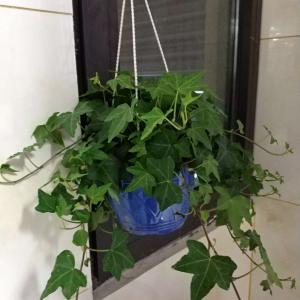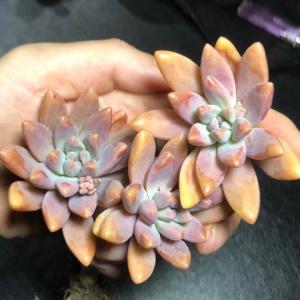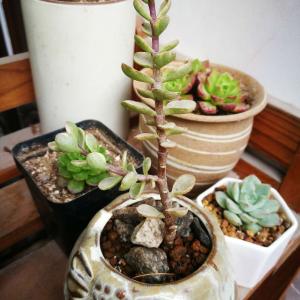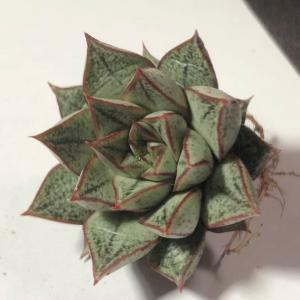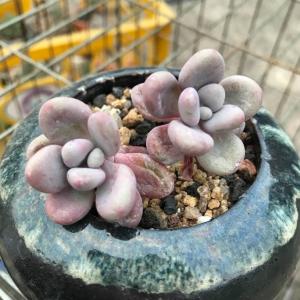文章
Miss Chen
2018年01月30日

Description: This annual or biennial wildflower initially forms a low rosette of basal leaves spanning 3-6" across. It later bolts, developing little-branched flowering stalks about 1-2' tall (less often, up to 3' tall). The light green stems are densely covered with appressed white hairs. The alternate leaves are up to 2½" long and ½" across; they are ascending to widely spreading. Most leaves are sessile, although some lower leaves have short petioles. The leaf blades are linear-lanceolate, lanceolate, or oblong in shape; their margins are smooth or remotely dentate with barely perceptible teeth. Upper leaf surfaces are medium green and sparsely covered with appressed white hairs, while lower leaf surfaces are pale green and more densely covered with appressed white hairs.
The central stem terminates in a leafy spike of flowers about 3-9" long; secondary spikes of flowers may be produced from lower lateral stems. Like the central stem, the flowering stalk is light green and densely covered with appressed white hairs. Flowers and developing seed capsules are densely arranged around the stalk. Individual flowers span ½–1¼" across when they are fully open. Each flower has 4 yellow pointed petals, 4 linear sepals, a narrowly cylindrical calyx tube, 8 stamens, a central style (actually 4 united styles) with a cross-shaped stigma, and a sessile ovary. Individual petals and sepals are 1/4–5/8" (6-15 mm.) long; they are both deciduous. Pale thin lines radiate across the petals from the center of the flower – these function as nectar guides. The blooming period occurs from mid-summer to early fall and lasts about 1½–3 months. The flowers bloom during the night and also on cloudy days. After individual flowers bloom, their ovaries begin to swell in size and become seed capsules. Individual seed capsules are up to ¾" long with a slightly curved and cylindrical shape; they are 4-celled and bluntly 4-lobed. The surface of each capsule is either glabrous or sparsely covered with appressed white hairs. Two rows of small seeds are contained in each cell of the capsule. Individual seeds are obovoid in shape. The root system consists of a taproot. This wildflower reproduces by reseeding itself.
Cultivation: The preference is full sun, dry-mesic to dry conditions, and sandy soil.
Range & Habitat: The native Cleland's Evening Primrose is occasional in sandy areas of northern and west-central Illinois, while elsewhere in the state it is rare or absent (see Distribution Map). The distribution map doesn't distinguish between Cleland's Evening Primrose and the more western Sand Evening Primrose (Oenothera rhombipetala); most observations are the former species. Habitats include upland sand prairies, sandy hill prairies, sand dunes, upland sandy savannas, abandoned sandy fields, areas along sandy paths, and areas along railroads. Slightly disturbed areas are preferred; occasional wildfires are beneficial in reducing the encroachment of woody vegetation.

Faunal Associations: The nocturnal flowers are pollinated by Sphinx moths; they are also visited by the Ruby-Throated Hummingbird and various long-tongued bees, including the oligolectic bees Lasioglossum oenotherae and Anthedonia compta. These visitors seek mostly nectar from the flowers, although some bees also collect pollen for their larvae. Various insects feed on the leaves, seed capsules, or plant juices of Cleland's Evening Primrose and similar species. These insect feeders include the caterpillars of several moths: Hyles lineata (White-Lined Sphinx), Proserpinus juanita (Green-Banded Day Sphinx), Schinia florida (Primrose Moth), Eudryas unio (Pearly Wood Nymph), Phtheochroa oenotherana (Tortricid Moth sp.), and two Mompha spp. (Momphid Moths). Other insect feeders include several flea beetles (Altica spp.), weevils (Tyloderma spp., Chalcoderma collaris, Acanthoscelidius acephalus), and aphids (Anoecia spp., Aphis oestlundi). White-Tailed Deer chomp off the flowering stalks of this wildflower (causing it to branch), while the Common Goldfinch eats the seeds to a minor extent. The foliage is also edible to cattle and other hoofed mammalian herbivores.
Photographic Location: A sandy hill prairie at Hooper Branch Savanna Nature Preserve in Iroquois County, Illinois.

Comments: On cloudy days, this can be a very showy wildflower. The petals of its flowers are unusual because they are bluntly pointed, rather than well-rounded. Cleland's Evening Primrose is very similar to the more western Oenothera rhombipetala (Sand Evening Primrose). Until recently, these two wildflowers were regarded as the same species. Sand Evening Primrose is more robust and its flowers are larger in size (1¼–2" across). However, some field specimens with mixed characteristics may be difficult to classify as one species or the other. Another common name for either of these two species is Four-Point Evening Primrose.
The central stem terminates in a leafy spike of flowers about 3-9" long; secondary spikes of flowers may be produced from lower lateral stems. Like the central stem, the flowering stalk is light green and densely covered with appressed white hairs. Flowers and developing seed capsules are densely arranged around the stalk. Individual flowers span ½–1¼" across when they are fully open. Each flower has 4 yellow pointed petals, 4 linear sepals, a narrowly cylindrical calyx tube, 8 stamens, a central style (actually 4 united styles) with a cross-shaped stigma, and a sessile ovary. Individual petals and sepals are 1/4–5/8" (6-15 mm.) long; they are both deciduous. Pale thin lines radiate across the petals from the center of the flower – these function as nectar guides. The blooming period occurs from mid-summer to early fall and lasts about 1½–3 months. The flowers bloom during the night and also on cloudy days. After individual flowers bloom, their ovaries begin to swell in size and become seed capsules. Individual seed capsules are up to ¾" long with a slightly curved and cylindrical shape; they are 4-celled and bluntly 4-lobed. The surface of each capsule is either glabrous or sparsely covered with appressed white hairs. Two rows of small seeds are contained in each cell of the capsule. Individual seeds are obovoid in shape. The root system consists of a taproot. This wildflower reproduces by reseeding itself.
Cultivation: The preference is full sun, dry-mesic to dry conditions, and sandy soil.
Range & Habitat: The native Cleland's Evening Primrose is occasional in sandy areas of northern and west-central Illinois, while elsewhere in the state it is rare or absent (see Distribution Map). The distribution map doesn't distinguish between Cleland's Evening Primrose and the more western Sand Evening Primrose (Oenothera rhombipetala); most observations are the former species. Habitats include upland sand prairies, sandy hill prairies, sand dunes, upland sandy savannas, abandoned sandy fields, areas along sandy paths, and areas along railroads. Slightly disturbed areas are preferred; occasional wildfires are beneficial in reducing the encroachment of woody vegetation.

Faunal Associations: The nocturnal flowers are pollinated by Sphinx moths; they are also visited by the Ruby-Throated Hummingbird and various long-tongued bees, including the oligolectic bees Lasioglossum oenotherae and Anthedonia compta. These visitors seek mostly nectar from the flowers, although some bees also collect pollen for their larvae. Various insects feed on the leaves, seed capsules, or plant juices of Cleland's Evening Primrose and similar species. These insect feeders include the caterpillars of several moths: Hyles lineata (White-Lined Sphinx), Proserpinus juanita (Green-Banded Day Sphinx), Schinia florida (Primrose Moth), Eudryas unio (Pearly Wood Nymph), Phtheochroa oenotherana (Tortricid Moth sp.), and two Mompha spp. (Momphid Moths). Other insect feeders include several flea beetles (Altica spp.), weevils (Tyloderma spp., Chalcoderma collaris, Acanthoscelidius acephalus), and aphids (Anoecia spp., Aphis oestlundi). White-Tailed Deer chomp off the flowering stalks of this wildflower (causing it to branch), while the Common Goldfinch eats the seeds to a minor extent. The foliage is also edible to cattle and other hoofed mammalian herbivores.
Photographic Location: A sandy hill prairie at Hooper Branch Savanna Nature Preserve in Iroquois County, Illinois.

Comments: On cloudy days, this can be a very showy wildflower. The petals of its flowers are unusual because they are bluntly pointed, rather than well-rounded. Cleland's Evening Primrose is very similar to the more western Oenothera rhombipetala (Sand Evening Primrose). Until recently, these two wildflowers were regarded as the same species. Sand Evening Primrose is more robust and its flowers are larger in size (1¼–2" across). However, some field specimens with mixed characteristics may be difficult to classify as one species or the other. Another common name for either of these two species is Four-Point Evening Primrose.
1
0
文章
Miss Chen
2018年01月30日

Description: This herbaceous perennial plant consists of a loose rosette of 2-5 ascending basal leaves, from which a flowering stalk develops. The basal leaves are 4-12" long and 2-5 mm. across; they are medium green, hairless, linear in shape, and somewhat truncate at their tips. Leaf venation is parallel. The flowering stalk is 6-16" tall and more or less erect; it is medium green, hairless, terete (circular in cross-section), and hollow. This stalk terminates in a simple umbel of flowers about ¾–1¼" across, consisting of 4-8 flowers and their pedicels. The umbel has a short obconic shape, and it is more or less flat-headed. Individual flowers are about ½" long and similarly across. Each flower has 6 tepals that are primarily white, 6 stamens, and a superior ovary with a single style. The interior base of the tepals is usually yellow, while the exterior of each tepal has a longitudinal vein that is often reddish or greenish. The tepals are elliptic or lanceolate-oblong in shape. The anthers of the stamens are bright yellow, while their filaments are white, pale yellow, or pale green. The pedicels are medium green, hairless, slender, and straight to slightly incurved; they are about ½–¾" long during the blooming period, but become up to 1½" long afterwards. At the base of the umbel of flowers, there is a pair of membranous bracts that are about ½" in length and lanceolate in shape; they eventually wither away. The blooming period occurs from mid-spring to late spring, while a second blooming period sometimes occurs during the autumn. There is no noticeable floral scent. Afterwards, the flowers are replaced by seed capsules. These capsules are 6-8 mm. long, globoid-obovoid and slightly 3-lobed in shape, and hairless. Immature capsules are green, while mature capsules become light tan, dividing into 3 parts to release their seeds. There are about 4-6 black seeds for each lobe of a divided capsule. The root system consists of a bulb about ½" across with fibrous roots below. The exterior of the bulb is brown and membranous, while the interior is white and fleshy. Both the foliage and bulb of this plant lack a noticeable garlic or onion aroma. Occasionally, basal offsets occur, creating clumps of clonal plants.
Cultivation: The preference is an open area with full or partial sunlight, moist to dry-mesic conditions, and a slightly acidic to alkaline soil containing rocky material or sand.
Range & Habitat: The native False Garlic (Nothoscordum bivalve) occurs occasionally in southern Illinois and rarely in central Illinois, while in the northern section of the state it is absent (see Distribution Map). This plant is found primarily in the southeastern United States and Southern Plains region of the country. Illinois lies along its northern range-limit. Habitats include upland prairies, hill prairies, sandy or silty riverbottom prairies, rocky glades (including limestone, dolomite, and chert glades), open upland woodlands, upland savannas, and thinly wooded bluffs. In Illinois, False Garlic is found in higher quality natural areas, where it probably benefits from occasional wildfires and other kinds of disturbance if it reduces competition from woody plants.
Faunal Associations: The nectar of the flowers attracts cuckoo bees (Nomada spp.), green metallic bees (Augochlorella spp.) and other Halictid bees, Andrenid bees (Andrena spp.), bee flies, and small to medium-sized butterflies. One of the Andrenid bees, Andrena nothoscordi, is a specialist pollinator (oligolege or monolege) of False Garlic (Nothoscordum bivalve). This bee and other small bees also collect pollen from the flowers. Syrphid flies may visit the flowers occasionally to feed on the pollen, but they are less effective at cross-pollination. White-tailed Deer have been observed to feed on the foliage of False Garlic in areas of south Texas with loam or clay-loam soil (Chamrad & Box, 1968), although some authors consider this plant to be poisonous (Pammel, 1911). There is also sophisticated archaeological evidence that prehistoric people, thousands of years ago, cooked the bulbs of this plant in rock ovens in east Texas (Short et al., 2015).
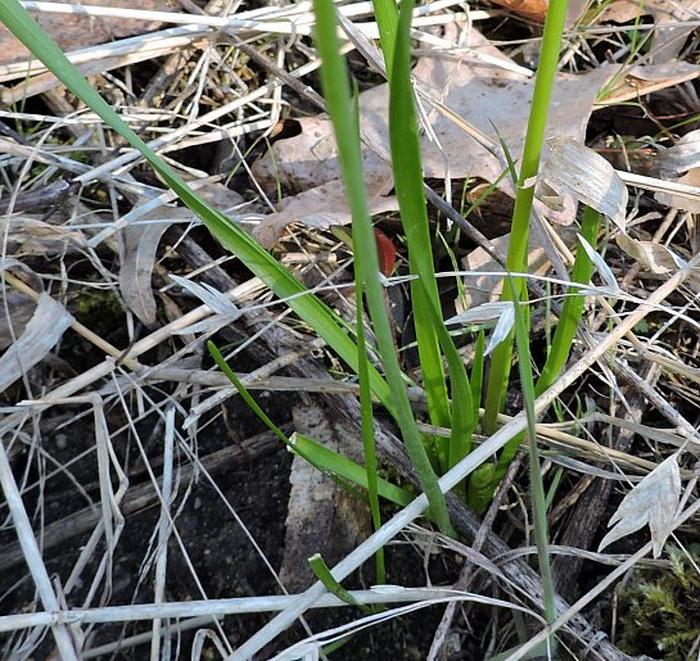
Photographic Location: A prairie at a nature preserve in Fayette County, Illinois. The photographs were taken by Keith & Patty Horn (Copyright © 2016).
Comments: False Garlic (Nothoscordum bivalve) resembles several other species in the Lily family (Liliaceae), especially native Allium spp. (Wild Garlic, etc.). This plant can be distinguished from this latter group of species by the lack of a noticeable garlic or onion aroma from its foliage and bulbs when they are rubbed or crushed. In addition, False Garlic never produces aerial bulblets in its inflorescence. Unlike many similar species in the Lily family, False Garlic has flowers with a yellow base and its basal leaves often have tips that are more truncate than rounded or pointed. Recently, the Lily family has been divided into several families of plants as a result of DNA analysis. Another common name of Nothoscordum bivalve is Crow Poison. The latter name suggests that this plant is poisonous, but the available evidence on this matter is contradictory.
Cultivation: The preference is an open area with full or partial sunlight, moist to dry-mesic conditions, and a slightly acidic to alkaline soil containing rocky material or sand.
Range & Habitat: The native False Garlic (Nothoscordum bivalve) occurs occasionally in southern Illinois and rarely in central Illinois, while in the northern section of the state it is absent (see Distribution Map). This plant is found primarily in the southeastern United States and Southern Plains region of the country. Illinois lies along its northern range-limit. Habitats include upland prairies, hill prairies, sandy or silty riverbottom prairies, rocky glades (including limestone, dolomite, and chert glades), open upland woodlands, upland savannas, and thinly wooded bluffs. In Illinois, False Garlic is found in higher quality natural areas, where it probably benefits from occasional wildfires and other kinds of disturbance if it reduces competition from woody plants.
Faunal Associations: The nectar of the flowers attracts cuckoo bees (Nomada spp.), green metallic bees (Augochlorella spp.) and other Halictid bees, Andrenid bees (Andrena spp.), bee flies, and small to medium-sized butterflies. One of the Andrenid bees, Andrena nothoscordi, is a specialist pollinator (oligolege or monolege) of False Garlic (Nothoscordum bivalve). This bee and other small bees also collect pollen from the flowers. Syrphid flies may visit the flowers occasionally to feed on the pollen, but they are less effective at cross-pollination. White-tailed Deer have been observed to feed on the foliage of False Garlic in areas of south Texas with loam or clay-loam soil (Chamrad & Box, 1968), although some authors consider this plant to be poisonous (Pammel, 1911). There is also sophisticated archaeological evidence that prehistoric people, thousands of years ago, cooked the bulbs of this plant in rock ovens in east Texas (Short et al., 2015).

Photographic Location: A prairie at a nature preserve in Fayette County, Illinois. The photographs were taken by Keith & Patty Horn (Copyright © 2016).
Comments: False Garlic (Nothoscordum bivalve) resembles several other species in the Lily family (Liliaceae), especially native Allium spp. (Wild Garlic, etc.). This plant can be distinguished from this latter group of species by the lack of a noticeable garlic or onion aroma from its foliage and bulbs when they are rubbed or crushed. In addition, False Garlic never produces aerial bulblets in its inflorescence. Unlike many similar species in the Lily family, False Garlic has flowers with a yellow base and its basal leaves often have tips that are more truncate than rounded or pointed. Recently, the Lily family has been divided into several families of plants as a result of DNA analysis. Another common name of Nothoscordum bivalve is Crow Poison. The latter name suggests that this plant is poisonous, but the available evidence on this matter is contradictory.
0
0
文章
Miss Chen
2018年01月29日

Description: This herbaceous perennial plant is 2½–4' tall, branching frequently in the upper half. The light green stems are four-angled and hairless. The opposite leaves are broadly lanceolate to ovate, and vary in color from light green to dark green, sometimes with yellow or red tints. These color variations are in part a response to environmental conditions. The hairless leaves are up to 4" long and 2" across, and have serrated margins. They exude an oregano scent. At the top of major stems are rounded heads of flowers about 1-3" across. The flowers begin blooming in the center of the head, gradually moving toward its periphery, forming a wreath of flowers. Each flower is lavender or pink, and about 1" long, with an irregular shape. The corolla divides into a tubular upper lip with projecting stamens, and three slender lower lips that function as landing pads for visiting insects. The blooming period occurs during mid-summer and lasts about 1 month. The root system consists of deep, strongly branched roots, and shallow rhizomes that are responsible for the vegetative spread of the plant. These rhizomes typically send up multiple leafy stems in a tight cluster, giving Wild Bergamot a bushy appearance.
Cultivation: The preference is full or partial sun, and moist to slightly dry conditions. Growth is more luxuriant in a moist rich loam, although this can cause the plant to flop around as the growing season progresses. Under drought conditions, the lower leaves will turn yellow and drop off the stems; this reaction is normal. The lower leaves often develop powdery mildew, particularly when the weather is rainy. While this plant is easy to grow, it often becomes rather dilapidated in appearance as the growing season progresses because of these problems. This plant often spreads aggressively.
Range & Habitat: The native Wild Bergamot occurs throughout Illinois, except for a few southern counties within the state (see Distribution Map). It is occasional to locally common. Habitats include moist to slightly dry black soil prairies, hill prairies, sandy Black Oak woodlands, savannas and woodland borders, thickets, borders of limestone glades, abandoned pastures, and landfills. The rhizomes can survive earth-moving and bulldozing operations, and send up plants in unexpected places. Some local populations may be plants that have escaped cultivation.

Faunal Associations: The nectar of the flowers attracts long-tongued bees, bee flies, butterflies, skippers, and hummingbird moths. Among the long-tongued bees, are such visitors as bumblebees, Miner bees, Epeoline Cuckoo bees, and large Leaf-Cutting bees. A small black bee (Dufourea monardae) specializes in the pollination of Monarda flowers. Sometimes Halictid bees collect pollen, while some wasps steal nectar by perforating the nectar tube. The Ruby-Throated Hummingbird also visits the flowers. The caterpillars of the moths Sphinx eremitus (Hermit Sphinx) and Agriopodes teratophora (Gray Marvel) feed on the foliage. A seed bug (Ortholomus scolopax) is sometimes found in the flowerheads. Mammalian herbivores usually avoid this plant as a food source, probably because of the oregano-mint flavor of the leaves and their capacity to cause indigestion; they may contain chemicals that disrupt populations of beneficial bacteria in the digestive tract.

Photographic Location: Photographs were taken at Meadowbrook Park in Urbana, Illinois.
Comments: For a member of the mint family, the flowers are large and beautiful. Wild Bergamot can be distinguished from other Monarda spp. by the color of its flowers – the corollas of its flowers are solid pink or lavender. Other species have flowers with red, purple, or white corollas, or they have dark purple dots on the lower lips of their corollas.
Cultivation: The preference is full or partial sun, and moist to slightly dry conditions. Growth is more luxuriant in a moist rich loam, although this can cause the plant to flop around as the growing season progresses. Under drought conditions, the lower leaves will turn yellow and drop off the stems; this reaction is normal. The lower leaves often develop powdery mildew, particularly when the weather is rainy. While this plant is easy to grow, it often becomes rather dilapidated in appearance as the growing season progresses because of these problems. This plant often spreads aggressively.
Range & Habitat: The native Wild Bergamot occurs throughout Illinois, except for a few southern counties within the state (see Distribution Map). It is occasional to locally common. Habitats include moist to slightly dry black soil prairies, hill prairies, sandy Black Oak woodlands, savannas and woodland borders, thickets, borders of limestone glades, abandoned pastures, and landfills. The rhizomes can survive earth-moving and bulldozing operations, and send up plants in unexpected places. Some local populations may be plants that have escaped cultivation.

Faunal Associations: The nectar of the flowers attracts long-tongued bees, bee flies, butterflies, skippers, and hummingbird moths. Among the long-tongued bees, are such visitors as bumblebees, Miner bees, Epeoline Cuckoo bees, and large Leaf-Cutting bees. A small black bee (Dufourea monardae) specializes in the pollination of Monarda flowers. Sometimes Halictid bees collect pollen, while some wasps steal nectar by perforating the nectar tube. The Ruby-Throated Hummingbird also visits the flowers. The caterpillars of the moths Sphinx eremitus (Hermit Sphinx) and Agriopodes teratophora (Gray Marvel) feed on the foliage. A seed bug (Ortholomus scolopax) is sometimes found in the flowerheads. Mammalian herbivores usually avoid this plant as a food source, probably because of the oregano-mint flavor of the leaves and their capacity to cause indigestion; they may contain chemicals that disrupt populations of beneficial bacteria in the digestive tract.

Photographic Location: Photographs were taken at Meadowbrook Park in Urbana, Illinois.
Comments: For a member of the mint family, the flowers are large and beautiful. Wild Bergamot can be distinguished from other Monarda spp. by the color of its flowers – the corollas of its flowers are solid pink or lavender. Other species have flowers with red, purple, or white corollas, or they have dark purple dots on the lower lips of their corollas.
0
0
文章
Miss Chen
2018年01月29日

Description: This herbaceous perennial plant is about 2-4' tall, branching occasionally. The stems are glabrous and light green; they are often angular below, becoming more round above. The dark green opposite leaves are up to 4" long and 3" across. They are cordate (somewhat triangular-shaped) and hairless, with smooth margins and short petioles. Some of the upper leaves near the flowers are much smaller and lanceolate. The upper stems terminate in clusters of magenta flowers on long stalks. Usually, there are a few hairs on these stalks and the pedicels of the flower clusters. A cluster of 3-5 flowers develop within a surrounding green bract with 5 lobes; this bract has the appearance of a calyx. These flowers are trumpet-shaped and span about ½" across, or slightly less. There are no petals; instead, a tubular calyx with 5 notched lobes functions as a corolla. At the center of each flower are 3-5 exerted stamens with yellow anthers. The blooming period is usually during the early summer and lasts about a month. There is little or no floral fragrance. The flowers typically open during the late afternoon, remain open at night, and close during the morning. The greyish brown seed is up to 3/8" (10 mm.) long and pubescent; it has 5 ribs. The root system consists of a thick dark taproot that is fleshy or woody. This plant spreads by reseeding itself.
Cultivation: The preference is full sun and mesic to dry conditions; partial sun is also tolerated. This plant commonly grows in poor soil that has a high content of clay, sand, or gravelly material. It will also grow in fertile loam, but suffers from the competition of neighboring plants. Foliar disease is not usually troublesome. It is easy to start plants from seeds.
Range & Habitat: Wild Four-O'Clock occurs in nearly every county of Illinois; it is a common plant (see Distribution Map). This plant is adventive from areas that lie west of of the state. Habitats include dry prairies, pastures, abandoned fields, grassy roadsides, rocky banks along ditches, areas along railroads (including the ballast), and miscellaneous waste areas. This plant is particularly common along railroads. It has a strong preference for disturbed areas.

Faunal Associations: The flowers are visited primarily by long-tongued bees, short-tongued bees, and moths. These insects seek nectar primarily, although the short-tongued bees collect pollen. It is possible that the Ruby-Throated hummingbird may visit the flowers as well. The species Catorhintha mendica (Wild Four-O'Clock Bug) is a specialist feeder on this plant and other Mirabilis spp. Another specialist is Heliodines nyctaginella (Four-O'Clock Moth); the caterpillars of this species feed on the foliage of this and other plants in the genus. Wild Four-O'Clock tends to increase in areas disturbed by livestock; it is unclear if these animals eat this plant. Deer reportedly avoid it. The seeds and roots are known to be poisonous, although pigs may dig up the roots and eat them.

Photographic Location: The photographs were taken along a railroad track in Champaign-Urbana, Illinois.
Comments: This is the most widespread Four-O'Clock species in Illinois that is from North America. The commonly cultivated garden plant by the same name is from South America; it is non-hardy. There are a few wild Mirabilis spp. in the Chicago area that are adventive from the west. They usually have more narrow leaves, hairier stems, and flowers with paler colors. In some of the Great Plains states, the Wild Four-O'Clock can have pale yellow flowers, but this color form doesn't appear to occur in Illinois.
Cultivation: The preference is full sun and mesic to dry conditions; partial sun is also tolerated. This plant commonly grows in poor soil that has a high content of clay, sand, or gravelly material. It will also grow in fertile loam, but suffers from the competition of neighboring plants. Foliar disease is not usually troublesome. It is easy to start plants from seeds.
Range & Habitat: Wild Four-O'Clock occurs in nearly every county of Illinois; it is a common plant (see Distribution Map). This plant is adventive from areas that lie west of of the state. Habitats include dry prairies, pastures, abandoned fields, grassy roadsides, rocky banks along ditches, areas along railroads (including the ballast), and miscellaneous waste areas. This plant is particularly common along railroads. It has a strong preference for disturbed areas.

Faunal Associations: The flowers are visited primarily by long-tongued bees, short-tongued bees, and moths. These insects seek nectar primarily, although the short-tongued bees collect pollen. It is possible that the Ruby-Throated hummingbird may visit the flowers as well. The species Catorhintha mendica (Wild Four-O'Clock Bug) is a specialist feeder on this plant and other Mirabilis spp. Another specialist is Heliodines nyctaginella (Four-O'Clock Moth); the caterpillars of this species feed on the foliage of this and other plants in the genus. Wild Four-O'Clock tends to increase in areas disturbed by livestock; it is unclear if these animals eat this plant. Deer reportedly avoid it. The seeds and roots are known to be poisonous, although pigs may dig up the roots and eat them.

Photographic Location: The photographs were taken along a railroad track in Champaign-Urbana, Illinois.
Comments: This is the most widespread Four-O'Clock species in Illinois that is from North America. The commonly cultivated garden plant by the same name is from South America; it is non-hardy. There are a few wild Mirabilis spp. in the Chicago area that are adventive from the west. They usually have more narrow leaves, hairier stems, and flowers with paler colors. In some of the Great Plains states, the Wild Four-O'Clock can have pale yellow flowers, but this color form doesn't appear to occur in Illinois.
0
0













